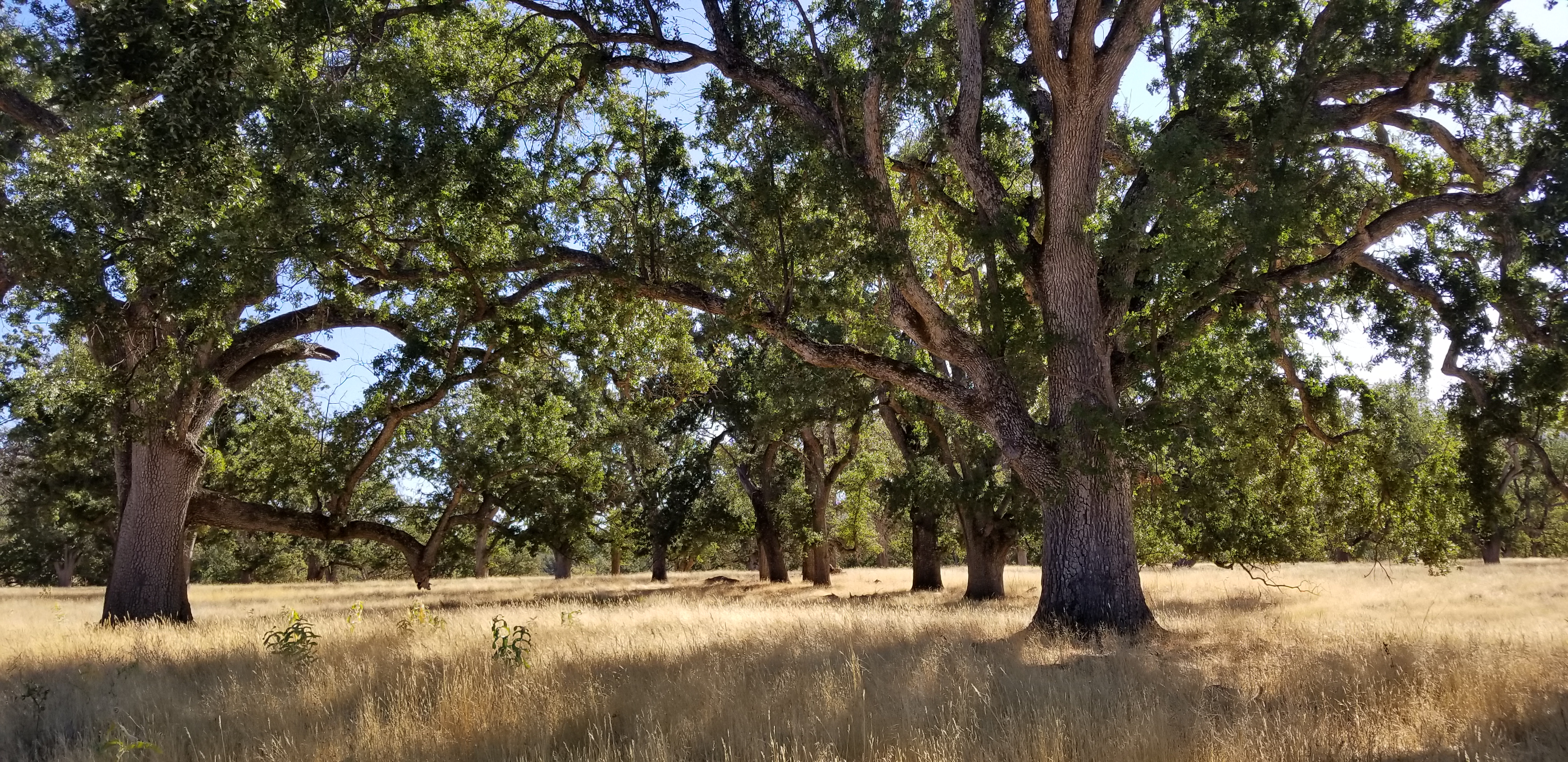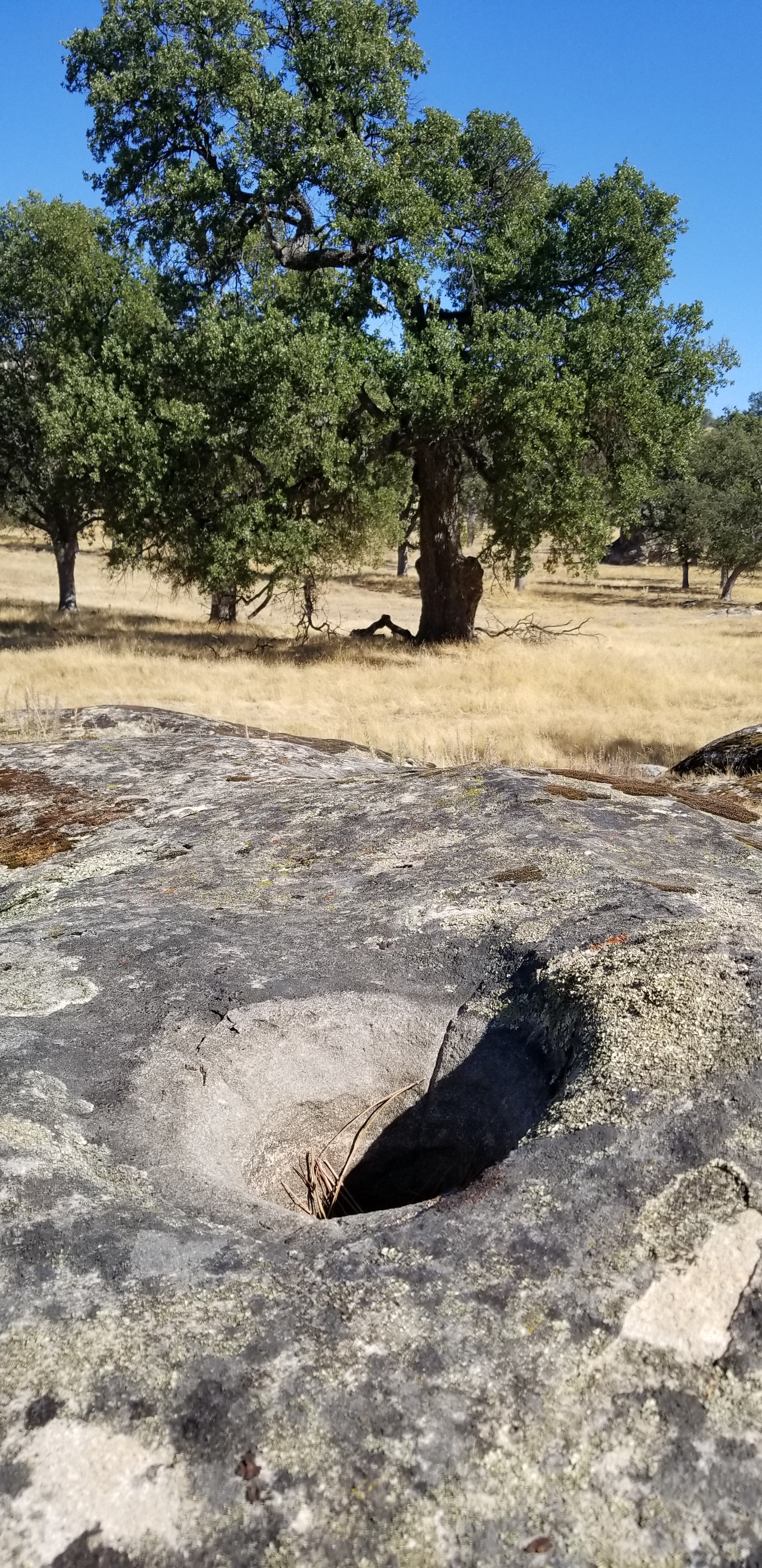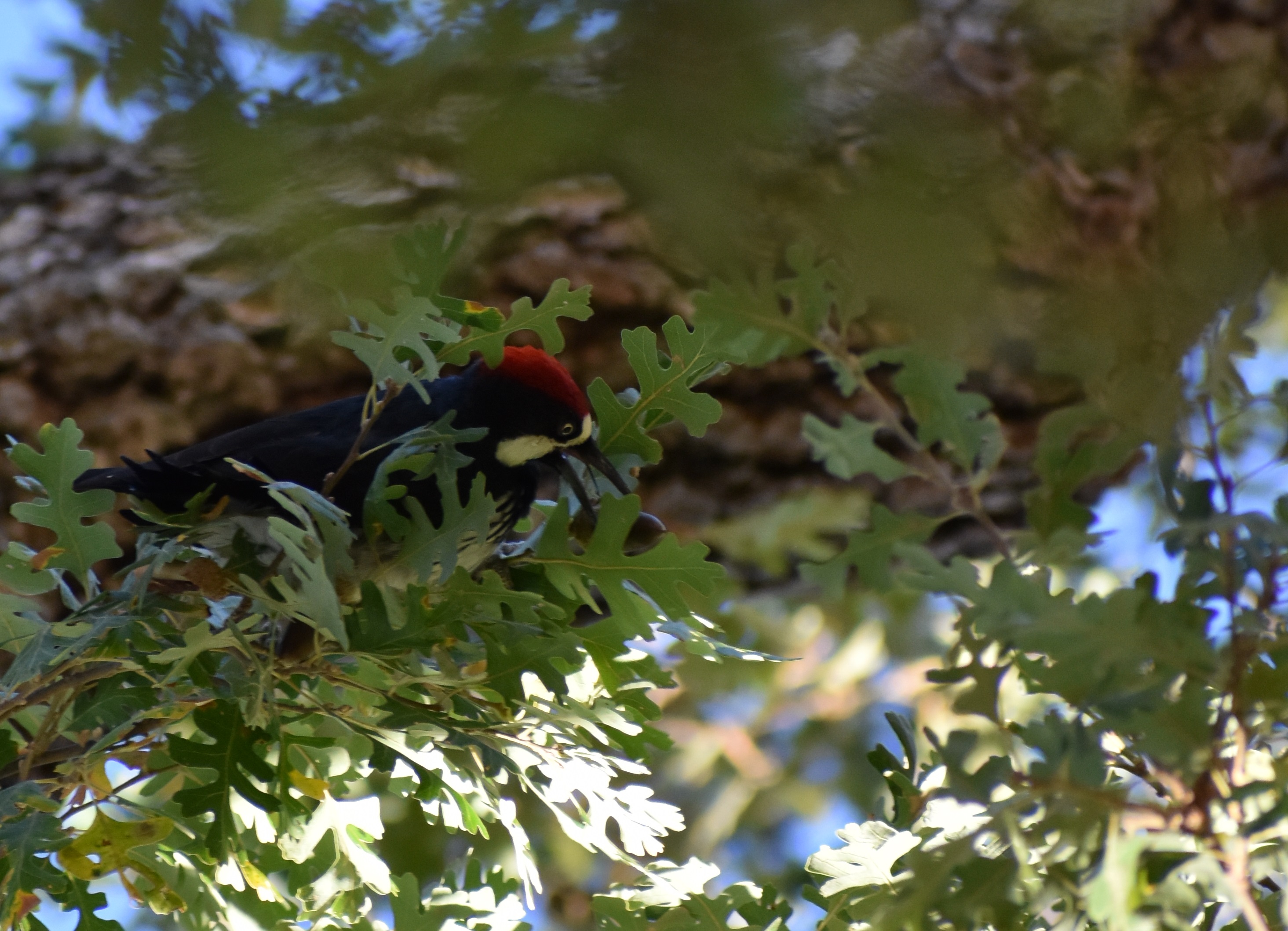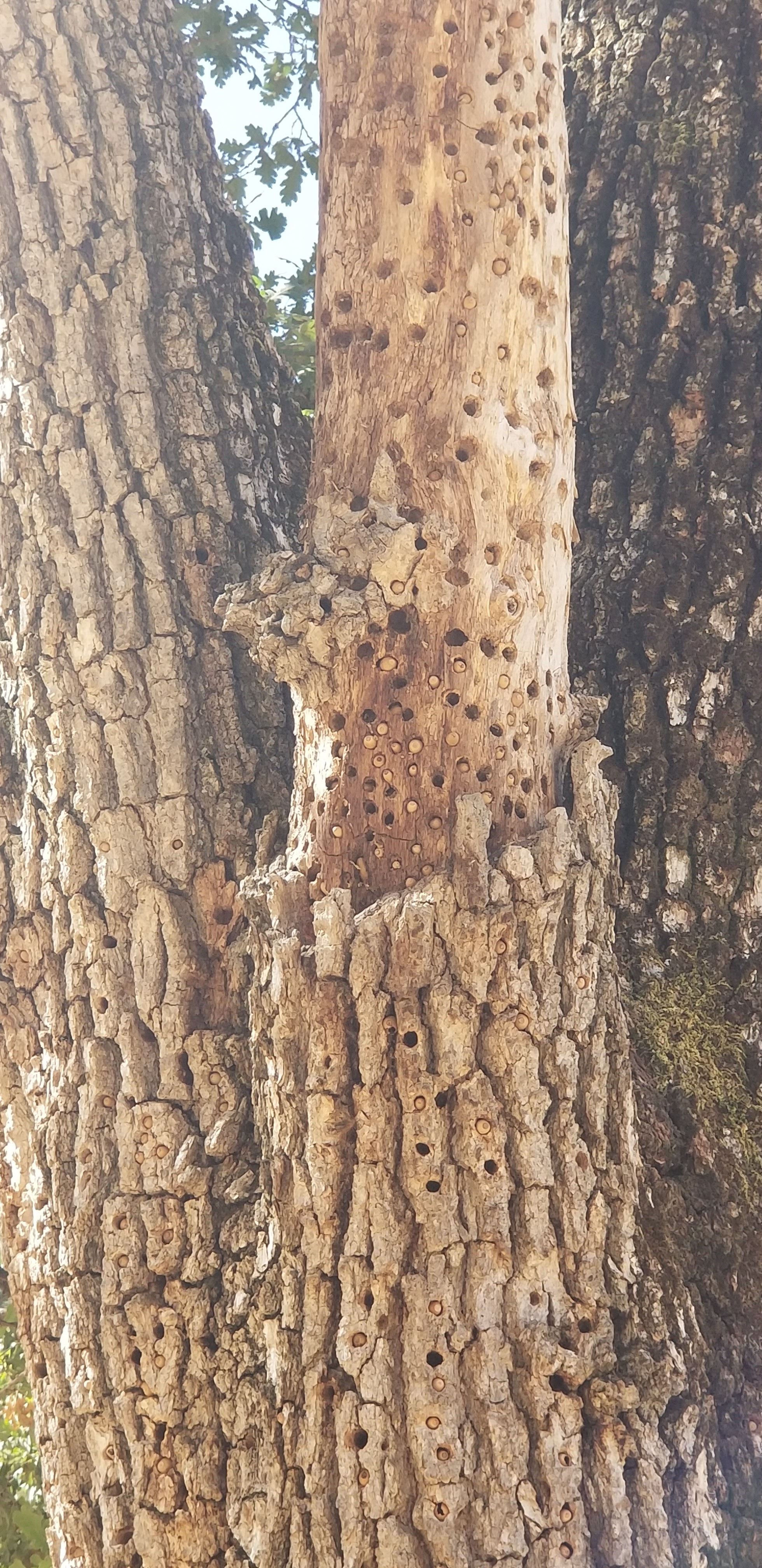These mighty oaks can still be seen today throughout California and along the trail. Spanish explorers names passes and towns such as El Paso de Robles. ("Robles" referred to the area's valley oaks), and later Like their Spanish predecessors, Americans would name their communities and streets after the trees (Thousand Oaks, Fair Oaks Boulevard, etc.)

Father Pedro Font wrote about the surrounding landscape after arriving to Mission San Antonio de Padua on March 6, 1776, “On the road yesterday we saw many oaks, but today there are many more and very large ones, and for that reason this valley is called the Cañada de los Robles… a wide canyon covered with great oaks.. very suitable, having fine lands and plenty of water from the river that follows the canyon” – Father Pedro Font, March 6, 1776. Campsite #85, Mission San Antonio de los Robles.

Mission Days at Mission San Antonio de Padua. NPS photo: M.Marquez
A single oak tree provides an entire ecosystem from the soil in the ground, up the bark, and all the way to the tip of the branches at the leaves. More than 100 U.S. vertebrate species eat acorns. The diverse Indigenous people of California knew that oak communities were rich in bear, deer, and other wildlife that thrived on acorns. The abundance of oaks allowed California’s indigenous inhabitants to achieve one of the highest population densities in the Americas, north of Mexico. Acorns gathered from oak trees were a staple of most native Californian diets.
Father Pedro Font, Franciscan priest and diarist, wrote of the expedition’s passage through southern California noting the use of acorns by the local tribes, “we found three small huts of Indians with many shucks of acorns, which constitute their food..” Father Pedro Font, December 27, 1775.
Acorns were eaten by pounding them in stone mortars, leaching the resulting powder of its tannins, and then eating the wet acorn meal as a cold mush

Oak savanna with mortar carved in a rocky outcrop. NPS photo: M.Marquez
Along the Salinas river Father Font writes, “All the road and all these plains are full of very large, tall oaks having good and large acorns. Along here there are some birds which they call carpenters, which make round holes in the trunks of the oaks. In each hole they insert an acorn so neatly that it can be taken out only with difficulty, and in this way they make their harvest and store, some of the oaks being all dotted with the acorns in their trunks” –Father Pedro Font diary entry on March 4, 1776 campsite #83, La Asunción.

Acon woodpecker in an Oak tree at Mission San Antonio de Padua in Jolon CA.
NPS photo: M.Marquez

Oak tree with acorns riddled in holes throughout the bark. NPS photo: M.Marquez
Oak trees are rooted in Californias natural and cultural history providing life for past and future generations to come.
